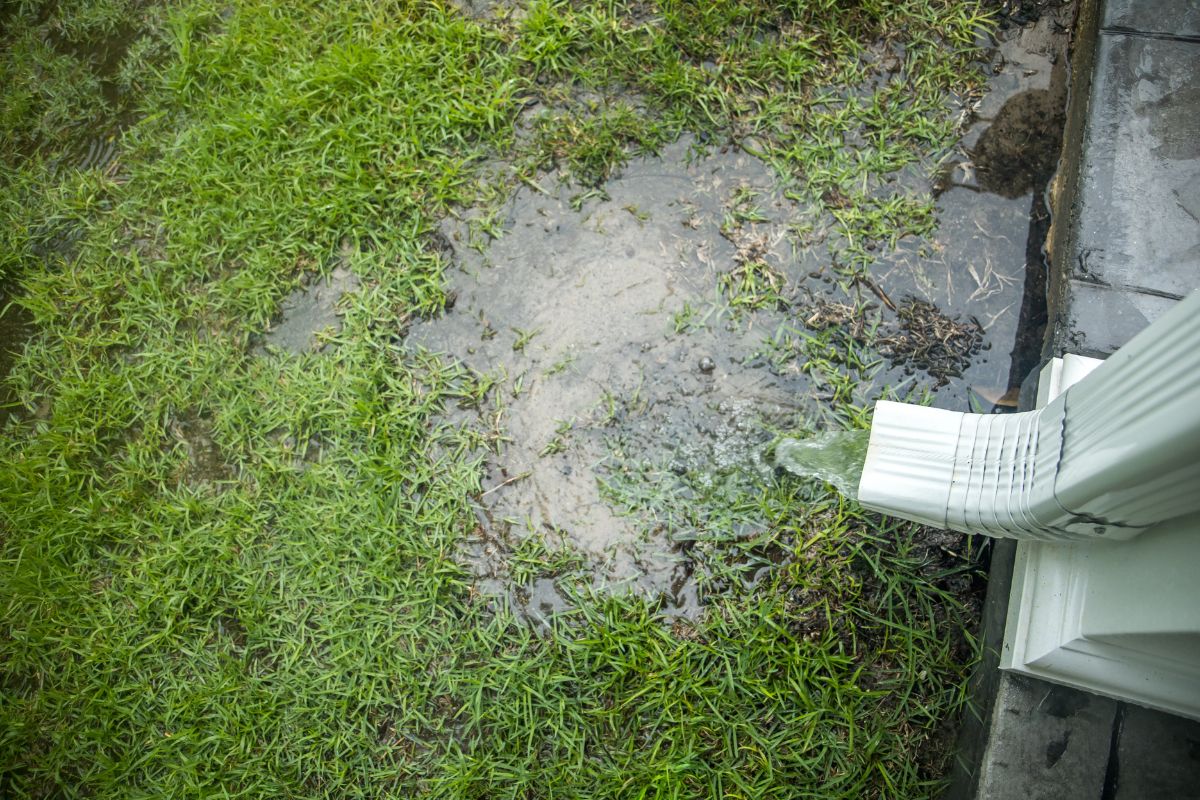One of the things that homeowners need to watch for are signs of improper drainage that indicate foundation problems. Although having standing water in your front yard or basement puddles is obvious, you might miss some of the other, less obvious signs.
The good thing is that there are some signs easy to spot if you are looking for them. Read on to learn more about the signs of drainage trouble you need to be aware of.
Gutters and Downspouts Spilling Out Too Much Water
One of the most obvious signs that your gutters are blocked is having a gush of water over the edge. Other signs of problems with your gutters include vertical strips of paint peeling off your house, mud on your siding, and vertical dirt streaks on your gutters. Clogged gutters can not only cause damage to paint jobs and rot your siding, but they can also cause structural damage.
Heavy rainfall may result in hundreds of gallons of runoff. When downspouts are too short, too much water ends up getting pooled close to the foundation. Damage to your basement is a common consequence.
When gutters are the problem, clearing them out will solve most issues, although replacement is sometimes necessary. Gutter extensions may help when downspouts are too short. However, when damage is more extensive, some foundation work will be necessary.
Water Stains and Deposits Are Signs of Improper Drainage
One of the most obvious signs of improper drainage is basement water stains. When the stain is high on the wall, the issue is usually gutter or yard runoff-based, both of which are relatively uncomplicated but possibly expensive to fix, usually requiring some changes to your drainage system.
Efflorescence or mineral deposits that water leaves behind often show up on walls as a gray or white crust. Although this is not structurally damaging, it is unsightly. Scraping the crust off and possible changes to your gutters, downspouts, or grading will usually resolve the problem.
One situation that may show a bigger problem is spalling, which occurs when water gets inside the masonry, making the wall start to flake. Widespread damage penetrating more than half an inch demonstrates more serious damage in many cases. When the spalling is superficial and confined to one area, preventative measures may be effective in preventing worse damage.
Foundation Cracks Usually Signal Trouble
Although small, harmless cracks are typical of the house settling, homeowners will benefit from keeping an eye on larger cracks. Any cracks more than ⅛” wide need to be kept under careful observation. When you see signs of these cracks growing, you will need to get in touch with a foundation specialist.
If the cracks are in an area where they were likely to have occurred with a new concrete load being installed, this is a best-case scenario. One of the reasons these cracks are less severe is because they seldom penetrate all the way through the layer. When the cracks are small and otherwise stable, having them filled is a possible solution.
When you notice cracks widening, this is a clear sign of foundation damage possibly resulting from poor drainage. This is a situation that requires an evaluation from a foundation specialist for the best solution. Repairs for issues relating to large cracks are more expensive in many cases but worth the investment to protect your home.
One of the most helpful things to know about repairs involving your foundation is that a foundation contractor takes all the guesswork out of the process. A company with the experience level of Olson Foundation Repair knows what all the best solutions are for your problems.
If you need foundation work, we are ready to help you with all your signs of improper drainage issues; contact us today to see how we can help.

